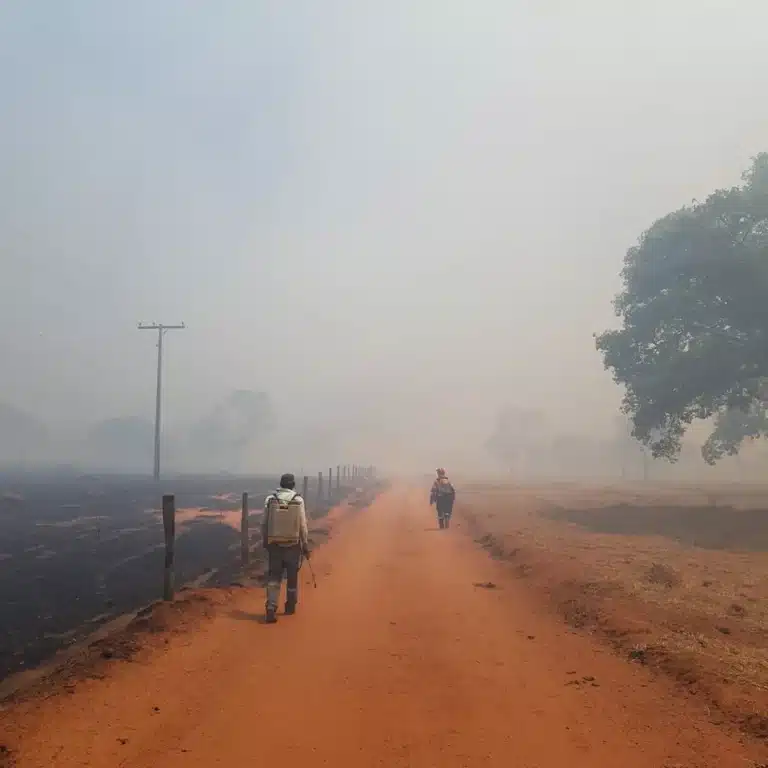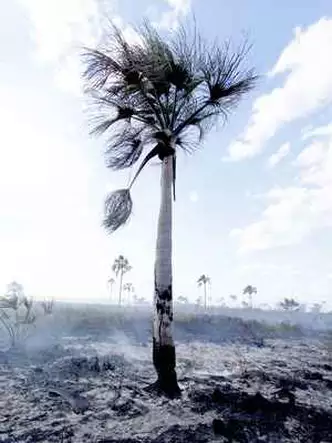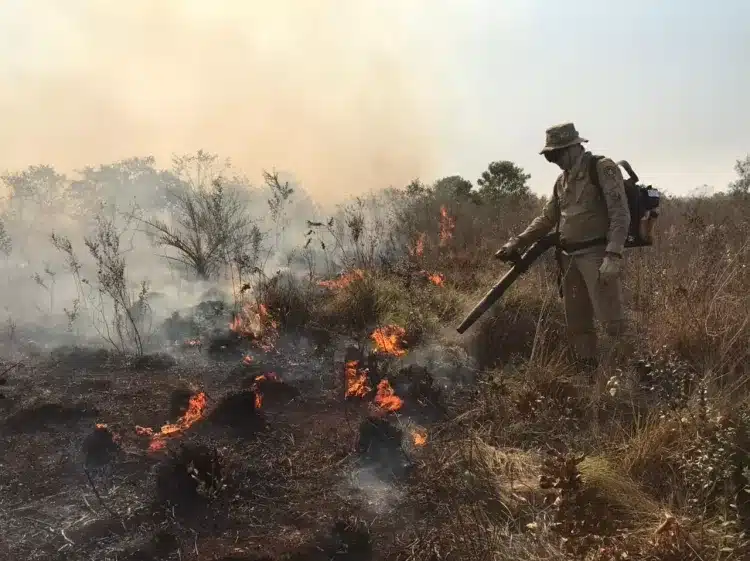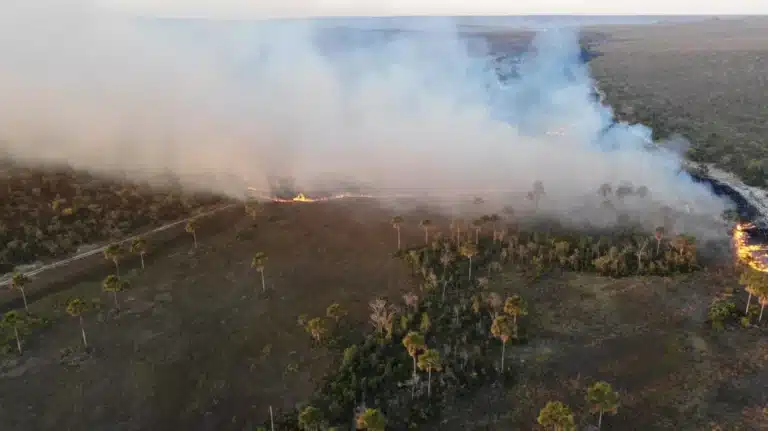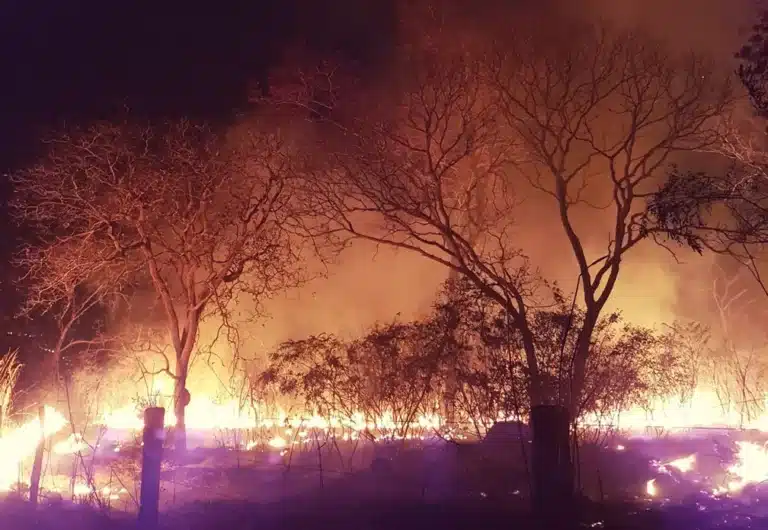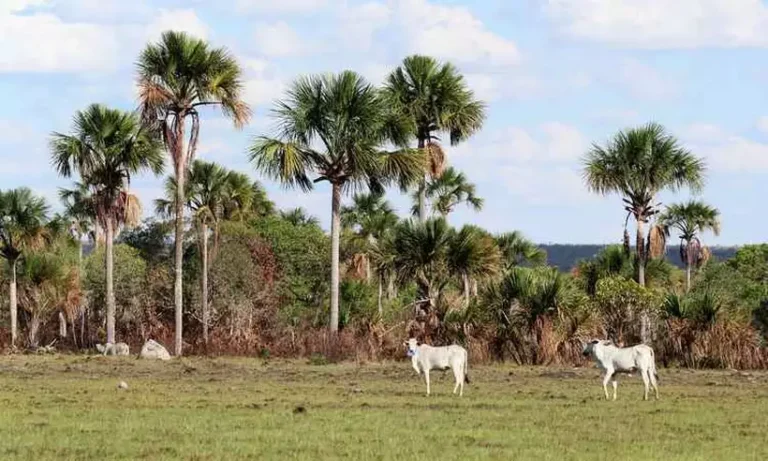Minas Gerais
CERRADO
From August to October 2021, in the municipality of Bonito, northern Minas Gerais state, a large fire raged through the Cochá Gibão State Environmental Preservation Area (APA), victimizing communities known as veredeiras, particularly the communities of Japão and Veredinha. These centuries-old communities have occupied the region for generations, preserving its veredas and wetland ecosystems, collecting roots, herbs, and the many fruits of the Cerrado, in harmony with the environment.
Veredas are the ‘low’ parts of the Cerrado, where waters spring up after seeping through its ‘high’ areas. Located in the São Francisco River Basin, communities living in those veredas are one of the socio-cultural expressions that illustrate the region’s diversity. Although their territories have not been demarcated, today the veredeiras communities in Northern Minas Gerais are organized in the Central Association of the Northern Minas Veredeiras Communities (ACEVER).
In the North of Minas Gerais, the 28 veredeiras communities are located in regions of the San Francisco Plateaus, mainly in the extensive general areas along the left bank of the São Francisco River, where sandy, deep, and mostly acidic soils predominate. These communities occupy a very large territory.
The Berço das Águas/Alegre and Buriti Grosso/São Joaquim veredeiras’ territories are located in the northern mesoregion of Minas Gerais, in the municipality of Januária. The Berço das Águas/Alegre territory has an area of 11,657 hectares and the Buriti Grosso/São Joaquim territory, 12,706 hectares. The approximate distance to the Januária municipal seat is 70 km, and 34 km to the urban area of Bonito de Minas. The closest urban centers are the villages of São Joaquim and Pandeiros, all in Januária.
The Boa Esperança community is part of this broader context of conflicts in the region, where squatters have been the main targets of attacks. According to data from the Dom Tomás Balduíno Documentation Center (Cedoc/CPT), there were 49 conflicts in the municipality of Formosa da Serra Negra alone between 2011 and 2021[12]. 60% of land conflicts were caused by land grabbers and, in 81% of the cases, it was squatters who suffered violence. Most of these land conflicts, 63% of them, took place in the last three years (2019 to 2021).
The two territories are located between the sub-basins of the Pardo River and Pandeiros River, on the left bank of the Pardo River and on the right bank of the Pandeiros River. Most of the territory is located in the sub-basin of Pandeiros River. However, over the years, as deforestation and wildfires have advanced, hand in hand with agribusiness, the territorial rights of these communities have been pushed aside and put off until today.
The conflict
Efforts to demarcate the veredeiras communities’ territories have been deadlocked for years. The case of the Poções communities, in the São Joaquim region in Januária, is emblematic and illustrates a reality shared by all the veredeiras communities in the region. Their land was occupied by the Rima/Plantar monoculture companies, followed by several comings and goings in court. In 2015, after a land recovery organized by the communities, the State Prosecutor’s Office revived a negotiation process to demarcate the territory through a Conduct Adjustment Agreement (TAC), which was never concluded.
The entry of this “Gerais” region (the commons traditionally used and occupied by these communities) into the sights of capital investors’ expansion plans opened it up to a host of speculators and companies looking to get land for their plantations and pastures. The common plateaus were privatized to become eucalyptus plantations; marshes and veredas were drained to receive irrigated cultivation; dry forests were cut down to make way for pastures, and the native vegetation was turned into charcoal for steel mill furnaces in the state’s metallurgical region. But this movement did not last even three decades. The plateaus and veredas on the left bank of the São Francisco, with their deep sandy soils, could not withstand intensive management for long. The veredas dried up; in the plateaus, eucalyptus plantations died out, and even the cultivated pastures did not prosper as expected.
Cornered into the veredas by the companies and no longer able to use the privatized plateau and forest areas, the communities now faced other threats: the state and federal environmental authorities. These agencies began to create conservation units encompassing company land, veredas, and the few common plateaus that were left for cattle grazing and fruit picking. Their farming areas, which had already been blocked by land grabbers since the 1970s, were now also being restricted by a conservation mosaic of national and state parks, by constraints on traditional uses of resources, and by intensified environmental inspections.
This context of confronting the expropriation of land and threats from environmental agencies, whose inspections have criminalized their traditional practices, led the communities to create the Veredeiros Movement. One of the objectives of the Movement is the socio-environmental recovery of the Buriti Grosso/São Joaquim and Berço das Águas/Alegre Veredeiras Communities’ Territories, in the municipality of Januária, which were illegally seized by two powerful companies linked to forestry sector of steel industry in Minas Gerais – Rima/Metalur and Plantar, backed by the Minas Gerais Government through Ruralminas and IEF (State Forest Institute).
The process of conflict persists with no satisfactory solution for the communities. During the Covid-19 pandemic, many communities were not only hit by the virus, but also harassed by criminals in the region. When the pandemic began to weaken in intensity, the communities regained access to their territory and were confronted with the enclosure of their traditional lands and many signs of deforestation to produce charcoal for pig iron plants.
On April 4, 2022, after suffering threats when they denounced the illegal enclosure of the area, the community leaders went to the Januária police station to file a formal complaint. The police refused to register it however, claiming that the leaders could not prove what they were saying, and could even be sued for slanderous accusation. As a result, the leaders decided to file a report of environmental damage at the Environmental Police Station. A few days later, they returned to the Environmental Police Station to obtain an official copy of the police report. The information in the document, however, was not consistent with what they had reported, nor with the photos and GPS coordinates they had presented.
The veredeiras communities in northern Minas Gerais have suffered countless episodes of violence, death threats, destruction of homes, illegal deforestation, pollution and shortage of water, criminal fires, sluggishness, and neglect by public authorities.
From August to October 2021, fires in Bonito de Minas were a disaster that ravaged the communities. Fires are a recurring phenomenon in the region, often used as a form of agricultural management, but, in many cases, they are set for criminal purposes. Although studies and investigations after these events are very rare, the communities have documented evidence of the intentional use of fire as a weapon of aggression against them. Incalculable damages go beyond the wild fauna and flora, to destroy local farmers’ beehives, crops, and livestock. Other losses observed include the decline in the quantity of water, preys, fruit, and the territory’s other ecological resources.
Veredeiros sustain life in their territory
The veredeiros have developed an agro-extractivist production system, with itinerant cultivation in marsh and forest areas, gathering and grazing of animals. With at some time their flexible nomadic pastoralism (transhumance), in the rainy season they let their cattle move freely across the flatlands, while in the dry season they take advantage of the still wet fields in the vereda surroundings. Their houses are traditionally located close to the water courses, benefiting from the cooler and more humid microclimate.
For the veredeiras communities, the plateaus are a place to live, grow food, raise animals, and heal. The Cerrado’s fruits are a source of food and income for dozens of families. The two most important species for the veredeiras communities are the moriche palm (Mauritia flexuosa) and the baru (Dipteryx alata). The moriche fruit is used to make pulp and jellies, besides being part of the communities’ diet. Since the moriche palm only bears fruit every two years, it is important to respect the cycle of each tree.
The baru, on the other hand, is an annual tree, and not only the nut, but also its bark and wood are used. Because it has healing properties, the bark is cooked and used against rheumatism. We make cakes and flour from its pulp, and it is also used as animal feed. The little nut is also healthy to eat, because it controls cholesterol and helps fight anemia. Not to mention that it is regarded as the best “Viagra” of the region.
Besides the moriche and the baru, the families collect souari nuts (pequi), cagaita (Eugenia dysenterica), mangaba (Hancornia speciosa), passion fruit, coconut, grugru palm, babassu, araticum (Annona crassiflora), courbaril, and favela (Cnidoscolus quercifolius), which are very important both for the families’ income and for the preservation of the environment. The families mainly grow cassava, rice, beans and corn, crops that are mostly harvested for the family’s own consumption. They also raise small animals (poultry and pigs) and have small cattle herds.
There is a profound knowledge being built day by day, over many decades, along with the territory.
The veredeiras communities’ people have always cultivated native, “creole” seeds for human and animal food, part of a culture that has been passed from generation to generation. The seed keepers are of great value to the world, for producing high-quality food, with no pesticides and no chemical fertilizers. The guardians also produce green manure seeds, such as rattlepods (crotralaria), and green, grey, striped, or silver mucuna beans, among other species. Traditionally they also produce natural insecticides to keep insects under control in the fields.
Northern Minas Gerais Alternative Agriculture Center (CAA-NM) – Cerrado Network (Rede Cerrado)

